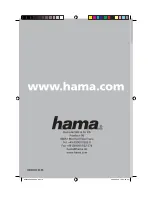
5
The most definitive PC solution at this point that we have seen is the use of a calibration cup.
Companies like Sequel Imaging create a device that plugs into certain video cards like those provided
by Matrox or Hercules and attaches to the monitor screen and the hard copy printouts. The suction
cup first measures the features of the printed page with respect to color, density, contrast etc., and
establishes a baseline to set the video card to. The suction cup is then attached to the face of the
monitor and a series of displays are measured for the same characteristics. This information is fed
back to the software, and the software rewrites the color look-up table on the video card to more
closely match the hard copy output from the printer. This sounds like the perfect solution, but the
major limiting factor is cost. The video cards that have this updating capability are typically over
$1000 and the suction cup and software are usually between $1,500 and $2,000.
Our recommendation is to find a solid image editing package like Adobe PhotoShop or Aldus
PhotoStyler that takes color anomalies into account. Both software packages allow one to change the
ever nebulous GAMMA of an image. A definition for "gamma" or as is more often seen, "gamma
correction", is a very difficult thing to come by. In trying to simplify the explanation of it, we have
distilled it down to the idea that gamma takes into account several elements of the image. These
attributes are color saturation, contrast, brightness etc. These are normalized on an X/Y axis as a
linear line with a 1:1 ratio. As mentioned before, hardware has a gamma, and so does the image.
That is why when we started this journey, we set the software to the monitor gamma. As we are
trying to approach 1, if we enter the monitor gamma a 1.014, the software will move the other way on
the gamma scale and set itself up for a gamma of .986. This will then average out to the 1 that we are
looking for. For the image, the gamma correction is dynamic, and also changes the hard copy output
of that image. You will no doubt note that when gamma for an image is changed several things occur.
The image may seem to get darker or lighter, contrast may seem to increase or decrease and colors
may seem to become more or less intense. The best way to handle gamma correction is to find out the
gamma of the device the image was obtained from, and working it backwards to that 1:1 ratio.
This may mean the image has a gamma of .65. If that is the case, to normalize the color content back
to something that is desirable, one would start by gamma correcting by 1.35. This is most easily seen
in the software implementation. Gamma is something to be aware of in color correcting, because in a
normal sequence of events, an image might be scanned. The scanner uses a CYMK color space and
has a specific gamma. The image is brought into the computer and shown through the video card onto
the monitor. Both working with RGB and with their own gamma. Then the image is output to a
color printer using CYMK and running it's own gamma. You can see that you may have to adjust
gamma for three devices within the software. The gamma numbers requested by the software should
be available from the hardware manufacturers. Now, gamma can be changed dynamically for the
image, or it can be changed overall for the software package. Most of these packages ask for the
monitor gamma. When this is entered, the software sets the defaults up to present colors on screen
with the monitor gamma adjusted for. If one wants to change the gamma of the image, this can be
done for exclusively that image as well (this would be done if it were an inferior scan).
























